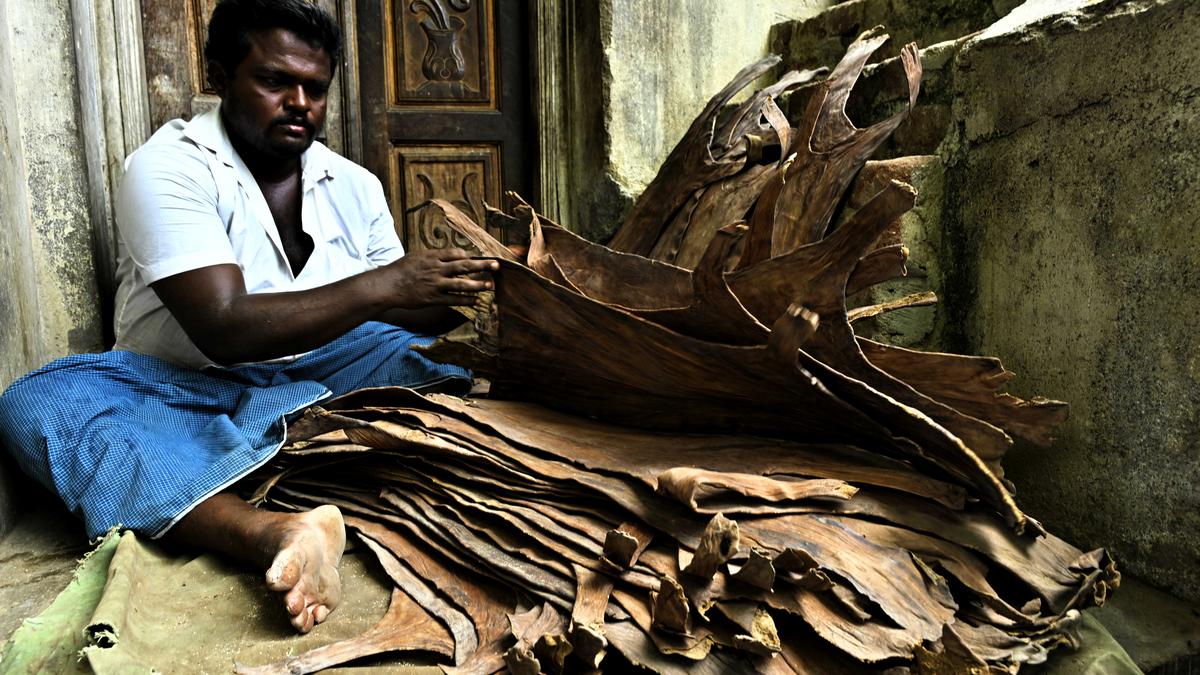
The Chithirai festival in Madurai and the goat skin water bags of Kariapatti Premium
The Hindu
Annual tradition of making goat skin bags for Lord Kallazhagar's festival in Madurai by Arunthathiyar community.
Amid the beating of drums, singing and dancing, a sea of devotees gathered at the Ramarayar Mandapam in Madurai for ‘Theerthavari’. As Lord Kallazhagar made His way into the mandapam during the recent annual Chithirai festival, the devotees sprayed water on Him, as part of the tradition.
To fulfil their vows, devotees, including children, dress up as Lord Kallazhagar and go to the mandapam to spray the water from bags made of goat skin, slung on their shoulders. This unique bag is made specifically for the annual event.
These bags are made at Kamarajar Colony, located off the main road, leading to Kariapatti town in the neighbouring Virudhunagar district. It houses about 150 families of mostly daily-wage workers. While most of them are engaged in construction, some are loadmen.
For most of the year, these residents go about their regular work. However, the colony, comprising people belonging to the Arunthathiyar community, becomes a hive of activity for at least three months before the Chithirai festival. At this place, the goat skin bags are made. The process of making these bags begins during the Tamil month of Thai and continues through Masi and Panguni. Men and women are involved in this traditional vocation.
K. Gurunathar Vellaichamy and his son Muthu Mahalingam, both involved in the work, say all the 150 families in the colony make these bags individually. Mr. Mahalingam says the workers buy the goat hide from the markets in Madurai, Virudhunagar, and Dindigul districts. The hide costs ₹40-₹90 apiece.
The workers first clean the hide and keep it soaked in water for a day. Then they apply sunnambu (limestone) on the hide to remove the fur with scrapers. Then, the layer of sunnambu is removed with the application of Avaramkolai and Nattu Karuvapatta. It gives the bag its brown colour. The hide is dried in the sun and then ironed. Now, it is ready to be polished and stitched.
This year, about 4,000 bags were made, and almost all of them were sold, says A. Thanga Murugan, a bag-maker. A bag cannot be reused and unused bags can be used only if they are stored properly, says Mr. Mahalingam.











